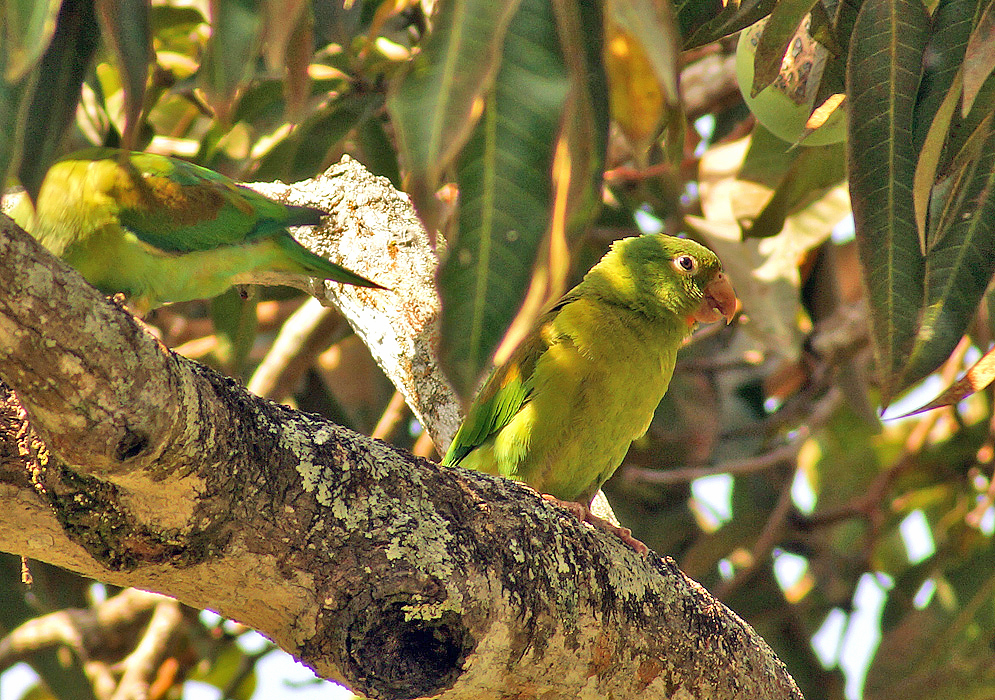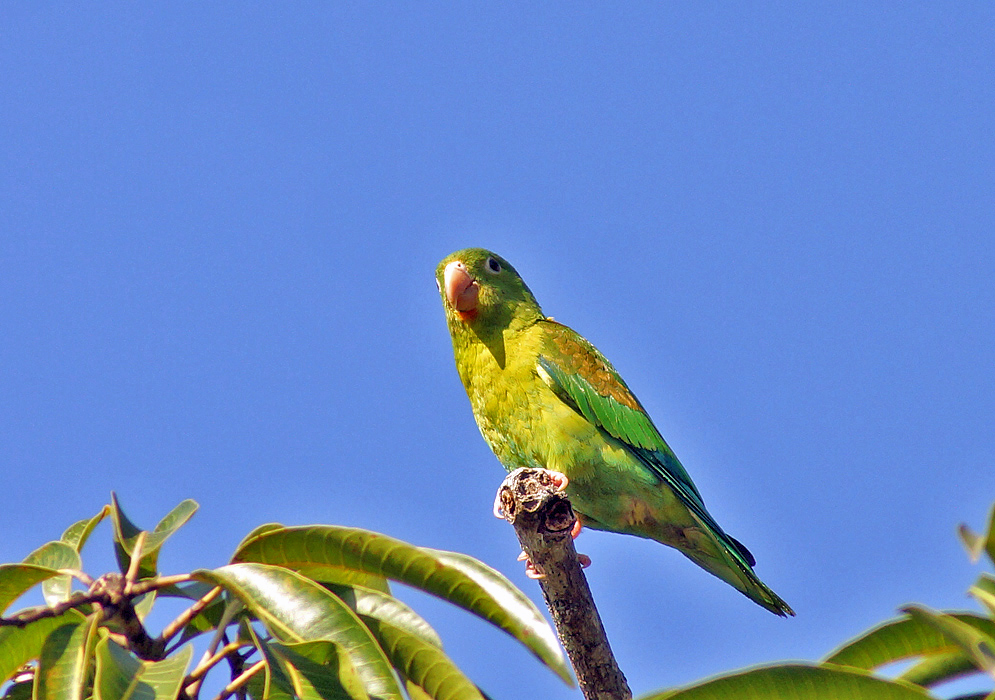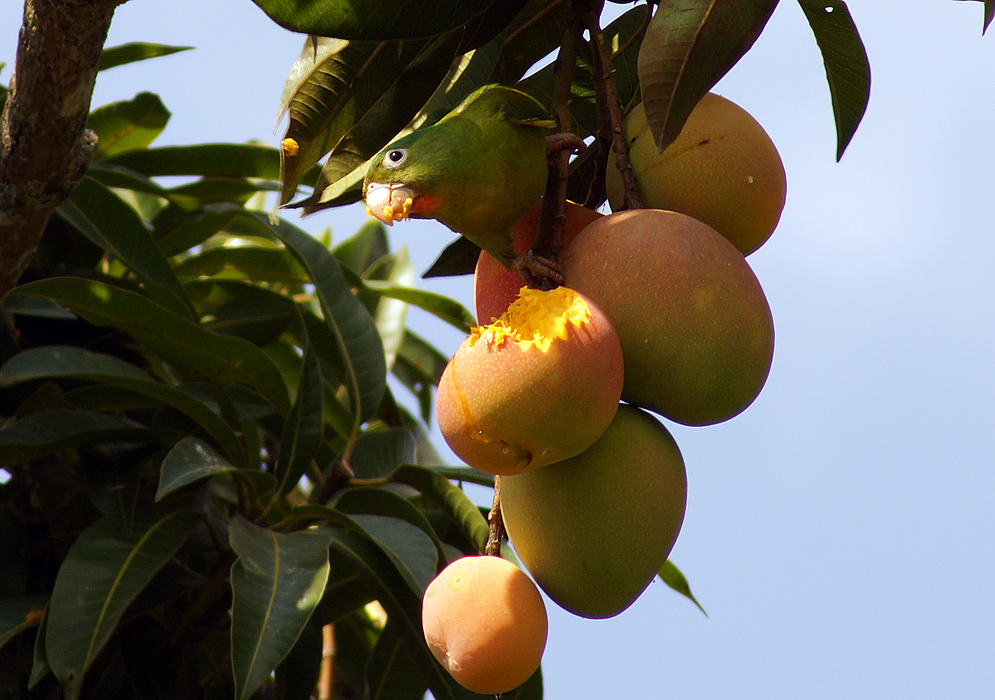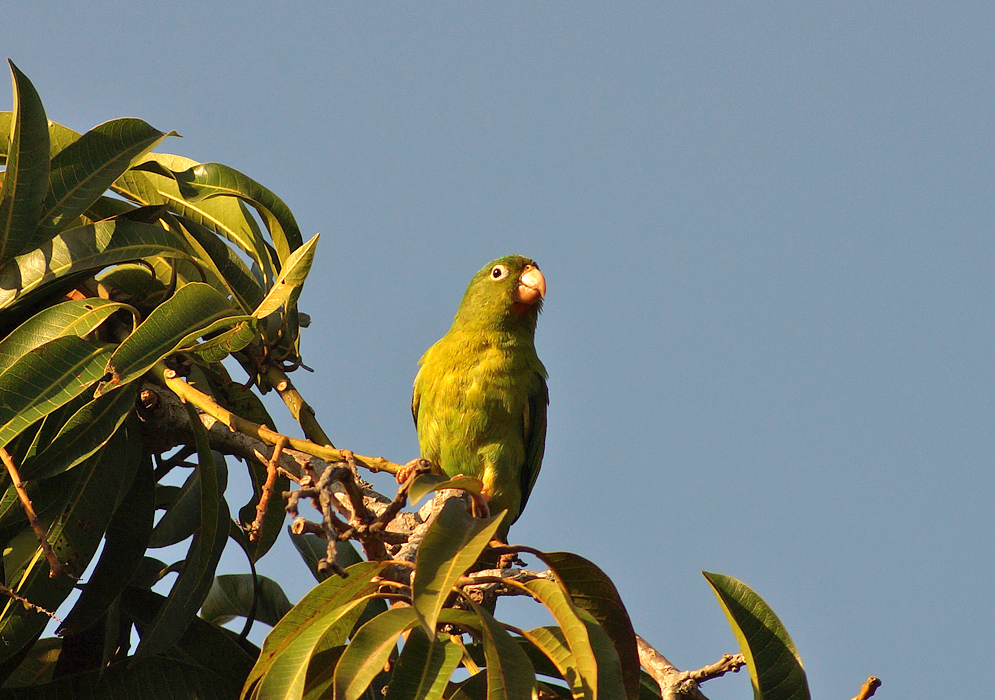This post has 11 Simple Fields-fields attached. Show fields.

The Orange-chinned Parakeet, is a small bird species belonging to the Psittacidae family, which encompasses African and New World parrots. This species primarily dwells in a range extending from southern Mexico through Central America and into Colombia and Venezuela. It inhabits a variety of semi-open to open landscapes including deciduous woodland, secondary and gallery forests, plantations, and even treed parts of towns, avoiding evergreen forests. Typically, these parakeets are found at elevations up to 4,600 feet. In appearance, the Orange-chinned Parakeet measures around 7.1 to 7.5 inches in length and weighs between 1.9 and 2.3 ounces. Adults display a bright green head with a bluish wash on the crown, complemented by a white eye ring, an orange chin that is often hard to see, and a pale bill. The upperparts and tail are bluish-green, while the underparts are mostly bright green with bluish vent and thighs, and yellow underwing coverts. The species is generally sedentary but may wander locally after the breeding season, at least in El Salvador. It is often seen in pairs or small flocks, and its diet is varied, including fruits, seeds, flowers, herbs, nectar, insects, and algae. The Orange-chinned Parakeet is known for foraging with the larger Orange-fronted Parakeet and can damage cultivated fruit. These parakeets also feed on mineral-rich soil. Their breeding season spans from January to April, with nesting observed in old woodpecker holes, natural cavities, or holes in arboreal termite nests. Communal nesting in large rotten snags has been noted, with a typical clutch size of four to seven eggs. The Orange-chinned Parakeet is categorized as Least Concern due to its extremely large range and very large population size, estimated to be between 500,000 and 4,999,999 individuals. These parakeets are known for their smart, curious, and energetic nature, making them excellent pets. They are playful and can be taught tricks, enjoying toys and interactive play. Known affectionately as "Pocket Parrots," they like to snuggle into cozy places, including their owner's shirt pockets, and require careful monitoring due to their fearless and inquisitive nature which can lead to accidents. They are vocal birds, capable of mimicking human speech, although not as clearly as some other parrot species, and can become loud when excited or seeking attention. Photographed in the Sierra Nevada de Santa Marta<, Colombia/p>







